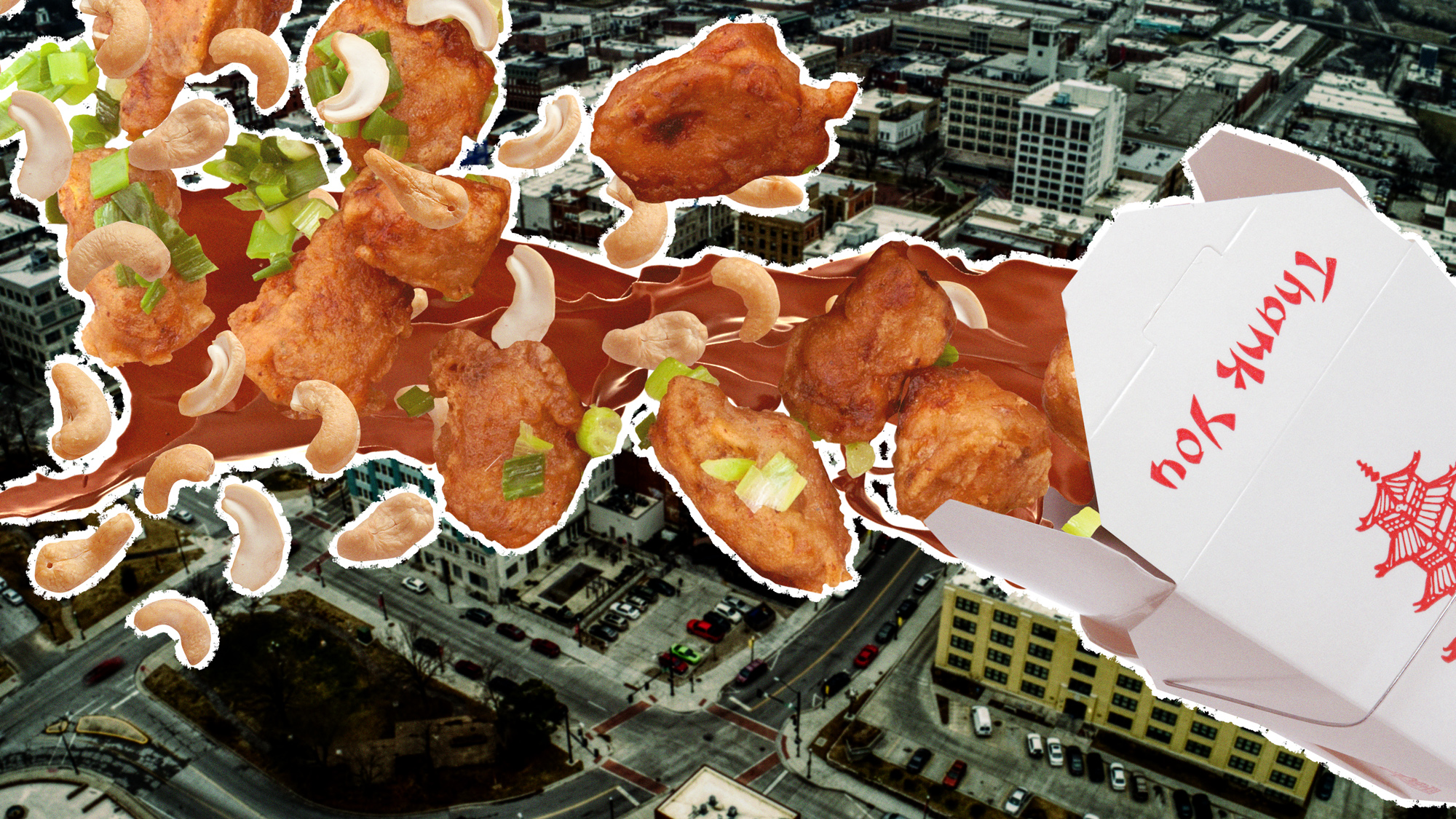Springfield, Missouri's Cashew Chicken Ought To Be The Only Cashew Chicken
The most American of American comfort foods was reinvented by a Chinese immigrant in Springfield, Missouri.
David Leong needed a way to incentivize people to try the food he was serving at Leong's Tea House. Chinese food was still new to the Midwest in 1963, but Leong thought that people might just like his Cantonese-inspired take on fried chicken and gravy.
Today you'll find Leong, now 99, at Leong's Asian Diner (you might recognize it from the documentary The Search For General Tso), a red-roofed, barn-shaped building tucked between a church and strip mall in Springfield. His son, Wing Yee Leong, still runs the kitchen, preparing the dish that is one of the Midwest's greatest contributions to Chinese-American food.
Here, at light wood tables between glass partitions etched with bamboo drawings, is where everyone waits for glistening mounds of Leong's cashew chicken nestled alongside a fat dome of fried rice and an egg roll made in house with the not-particularly-secret ingredient of peanut butter.
Springfield-style cashew chicken starts with fried chicken, not the more common stir-fried version. The fried component is key. Stir-frying is nice, but it's the differences in textures that makes this dish so darn enjoyable.
At Leong's, cooks blanch the chicken, bread it, and then fry it to order. The crunchy chunks of chicken are then smothered in gravy: a rich, deep combination of oyster sauce, light and dark soy sauce, and ginger stirred into a chicken stock thickened with cornstarch. (This is proof that not all brown sauce is created equally.) The final touch is a sprinkle of chopped green onions and cashew halves. The nuts are why cashew chicken is a keeper. Just as they do with brown beer and chocolate bars, the cashews round out the salt with a little bit of fat and flavor. And the cashews must be halves—not the broken pieces that you shake into your mouth from the bottom of the container—because there is a noble desperation in trying to pin down a cashew half slick with sauce with the end of your chopsticks before letting it teeter between them, hoping it stays put long enough to make it to your mouth.
If you get a dish with mushrooms and bell peppers, then, as they say on Antiques Roadshow, you, ma'am, have a fake. Because, as Aimee Levitt pointed out in a recent Takeout Fantasy Food Draft, "it's classic Midwest, so they skip the veggies."
"Cashew chicken is a kind of inside joke in Springfield," Kelly Knauer, a Springfield native, told John T. Edge in a 2009 piece for the New York Times. "But it's our daily bread, our defining food. And it starts with David Leong."
Leong was born in Guangdong, China, and immigrated to the U.S. in 1940, where he became a naturalized citizen and served in the Army during World War II. Missouri was never part of his plan. After the war, he cooked in restaurants in the Southeast before landing in Pensacola, Florida. Then, in 1955, a surgeon on vacation made him an unexpected offer. The doctor was opening a Chinese restaurant in Springfield called The Lotus Garden and convinced Leong to move to the middle of the country to be his chef.
That restaurant only lasted a year, but it gave Leong a foothold in Springfield. He brought his wife and children to the heartland along with his brother, Gee Yuen Leong.
Springfield was not always welcoming. After The Lotus Garden closed, Leong was told not to come back to the eatery across the street because of his race. When he took out the trash at home, his daughter told the Springfield News-Leader, his neighbor told him "to go back to China."
And when the brothers started their own restaurant, Leong's Tea House, in 1963, a dynamite explosion delayed the opening for a month. Vandals stole the lion statues in front. But the 350-seat white tablecloth restaurant stayed open, and one dish, that Cantonese reimagining of fried chicken and gravy, caught on with diners who appreciated the blend of Chinese and Southern fare.
"He boned the chicken and took the authentic Asian dish of stir fry chicken and battered and fried it to adapt to the Ozark lifestyle," Wing Yee Leong told the Missouri State University Standard in 2015.
Leong and his brother eventually split over a dispute about ownership. Tensions had grown between them to the point that Leong and his oldest son wore handguns while they cooked on the line. Eventually Gee Yuen Leong opened Gee's East Wind, which served the same menu, including Springfield-style cashew chicken, only a few blocks away; it closed in 2000.
Over three decades, David Leong freely shared how to prepare his money-maker with other chefs. It eventually became known as Springfield Cashew Chicken, and it became a defining hallmark of the community, making its way onto menus everywhere, from school cafeterias to the Bass Pro Shop Outdoor World.
Leong's Tea House closed in 1997 after 34 years in business. But when Wing Yee, one of David's seven children, thought about opening his own place, his father decided to get back into the restaurant business. Leong's Asian Diner opened in 2010, and it was as though nothing had changed.
The chicken is still crispy. The sauce is still thick, a slow avalanche of salt and soy. And then, every few bites you still get the crunch from the cashews.
In Springfield, they just call it cashew chicken. Maybe the rest of the world should adopt the city's definition.
